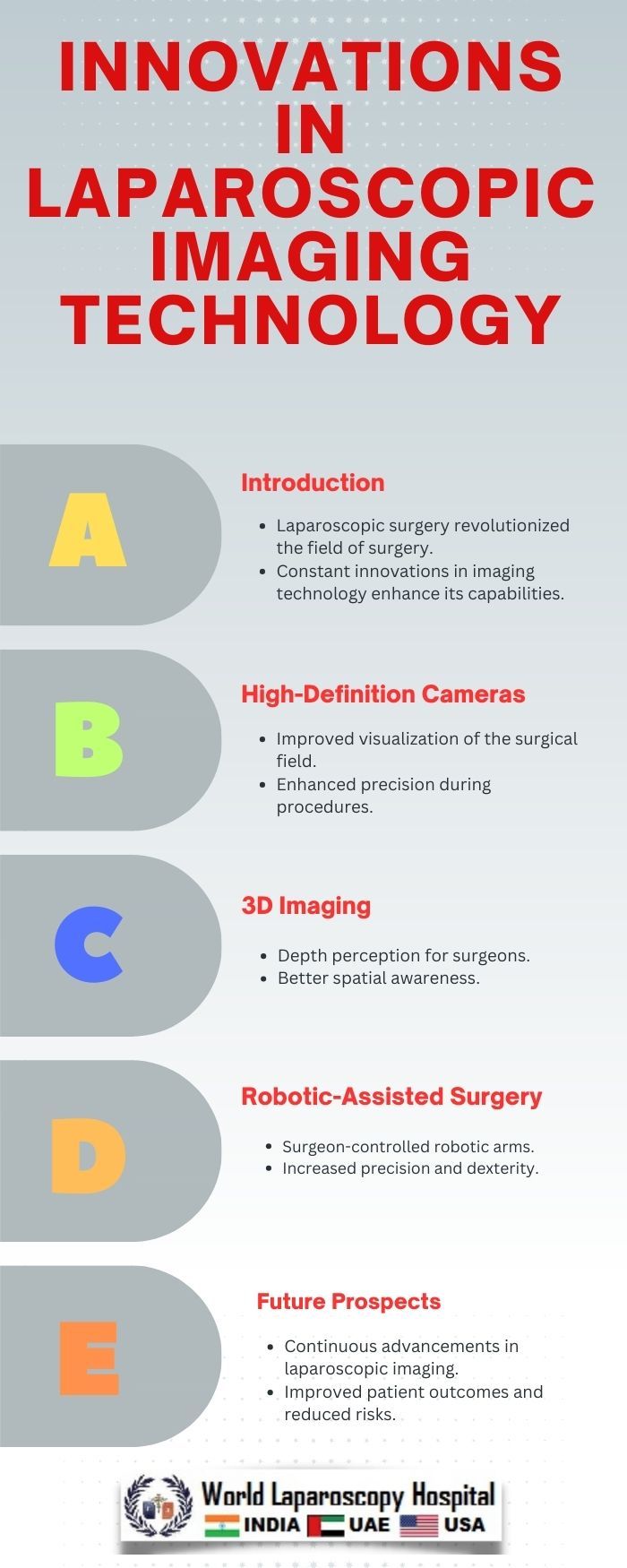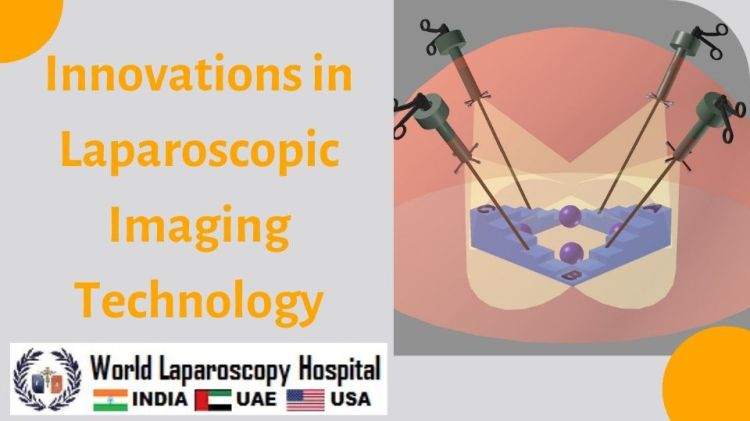Title: Innovations in Laparoscopic Imaging Technology: A Paradigm Shift in Surgery
Introduction:
Laparoscopic surgery, also known as minimally invasive surgery, has transformed the field of surgery over the past few decades. Surgeons in Gurugram and around the world have witnessed remarkable innovations in laparoscopic imaging technology. These innovations have not only improved the precision and safety of surgeries but have also significantly reduced patient recovery times. In this comprehensive article, we will explore the cutting-edge developments in laparoscopic imaging technology, their impact on the surgical landscape, and the future possibilities they hold.

Before delving into the latest innovations, it's important to understand the historical context of laparoscopic surgery. The technique was first introduced in the 1980s and involved inserting a tiny camera and surgical instruments through small incisions in the patient's abdomen. This departure from traditional open surgery marked the beginning of a new era in surgical procedures.
Evolution of Laparoscopic Imaging Technology:High-Definition Cameras:
One of the fundamental breakthroughs in laparoscopic imaging technology has been the introduction of high-definition cameras. These cameras provide surgeons with exceptionally clear and detailed visuals of the surgical field. Surgeons in Gurugram can now observe intricate structures and tissues with unparalleled clarity, allowing for more precise and efficient surgeries.
3D Visualization:
Another milestone in laparoscopic imaging is the integration of 3D visualization systems. This innovation adds depth perception to the surgeon's view, mimicking the natural binocular vision experienced in open surgery. Gurugram-based surgeons can now better navigate complex anatomical structures and perform intricate procedures with greater ease and accuracy.
Minimally Invasive Tools:Innovations in laparoscopic instruments have played a vital role in enhancing surgical outcomes. Smaller and more specialized instruments have been developed, allowing surgeons in Gurugram to perform a wide range of procedures through tiny incisions. These tools are designed for precise manipulation, reducing tissue trauma and minimizing patient discomfort.
Robotics in Laparoscopic Surgery:Robotic-assisted laparoscopic surgery has gained significant popularity in recent years. This technology combines the surgeon's expertise with robotic precision. Surgeons in Gurugram now have access to robotic systems that offer greater dexterity and enhanced control during procedures. These systems can be particularly beneficial in delicate and intricate surgeries.
Artificial Intelligence (AI) and Laparoscopic Imaging:The integration of AI in laparoscopic imaging is a promising development. AI algorithms can assist surgeons by analyzing real-time imaging data, highlighting anomalies, and providing recommendations during surgery. This can lead to improved decision-making and potentially reduce the risk of complications.
Telemedicine and Remote Consultations:The digital age has brought about new possibilities for laparoscopic surgery. Surgeons in Gurugram can now collaborate with experts from around the world through telemedicine and remote consultations. This allows for knowledge sharing and second opinions, ultimately benefiting patient care.
Enhanced Training and Education:The evolution of laparoscopic imaging technology has also influenced surgical training and education. Surgeons in Gurugram can now access realistic simulations and virtual reality tools to practice and refine their skills. This has the potential to shorten the learning curve for complex laparoscopic procedures.
Improved Patient Outcomes:Ultimately, these innovations in laparoscopic imaging technology have translated into improved patient outcomes. Smaller incisions result in less pain, reduced scarring, and faster recovery times. Patients in Gurugram can often return to their daily activities sooner, thanks to these advancements.
Challenges and Future Directions:While laparoscopic imaging technology has come a long way, challenges remain. Cost considerations, the need for specialized training, and the integration of AI into surgical practice require careful planning and investment. Additionally, ongoing research is needed to further refine these technologies and expand their applications.
Conclusion:In conclusion, innovations in laparoscopic imaging technology have revolutionized the field of surgery, benefiting both surgeons and patients in Gurugram and worldwide. High-definition cameras, 3D visualization, robotics, AI, and telemedicine have all contributed to safer, more precise, and minimally invasive procedures. As technology continues to advance, the future of laparoscopic surgery holds even more exciting possibilities, promising better outcomes and improved patient care. Surgeons in Gurugram and beyond must stay at the forefront of these developments to provide the best surgical care possible.
